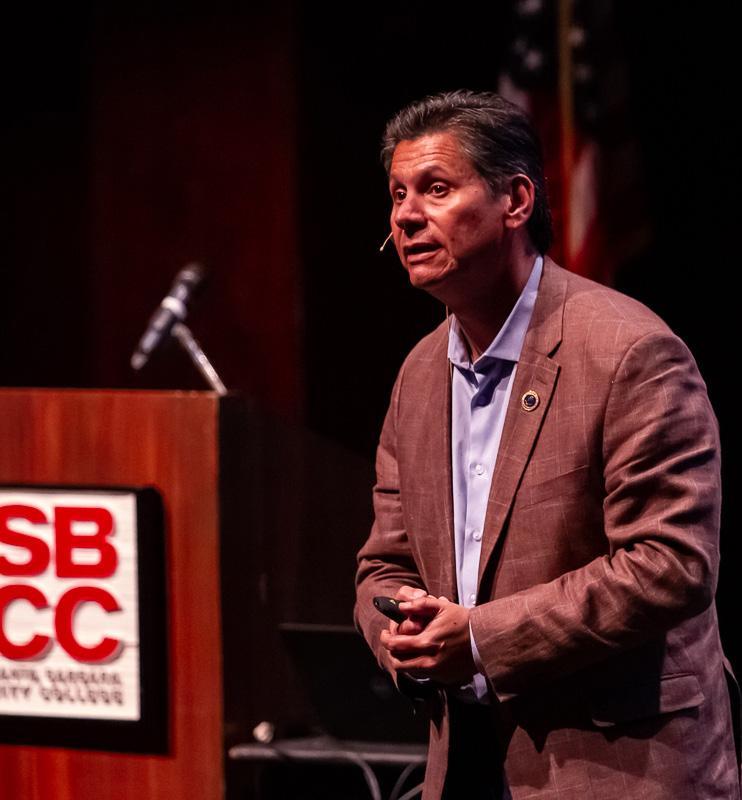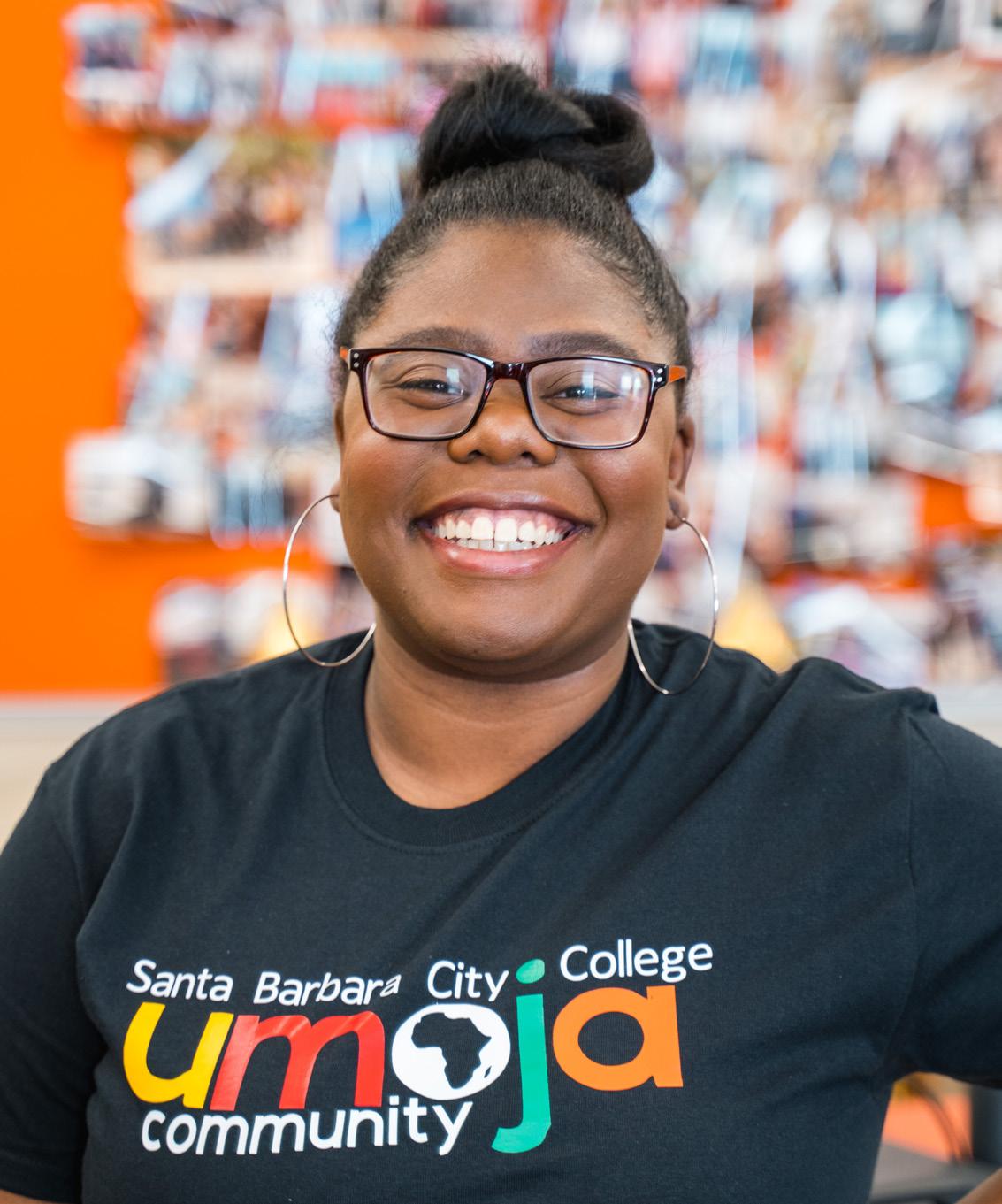
4 minute read
A Community of KINSHIP
“LEONARDO DORANTES LECTURE” WITH DR. MARC LAMONT HILL
In November, Dr. Marc Lamont Hill came to campus to deliver the 2019 Leonardo Dorantes Memorial Lecture, “Building Community in an Hour of Chaos.” A noted scholar and award-winning journalist, Dr. Hill offered a critical analysis of the current social and political moment. By identifying key issues, challenges, controversies and trends that have emerged or lingered during this challenging time, he outlined the work that must be done to sustain the progress of the “Freedom Struggle.” Moving beyond mere critique, he provided concrete solutions, as well as hope and possibility for healing our national, local and university communities. His bold vision of the future, where social progress and the pursuit of equality depend on listening to each other while adopting a fearless attitude toward change, was enthusiastically received by the audience of faculty, staff, students and members of the community.
CHANCELLOR OAKLEY’S “VISION FOR SUCCESS” VISIT TO CAMPUS
“As a Community College, you are at the epicenter of all things that are going on in the community,” noted California Community Colleges Chancellor Eloy Ortiz Oakley when he visited SBCC as part of his listening tour of all 155 California Community Colleges (CCC) last fall. The purpose of the tour was to discuss the CCC’s Vision for Success, its goals and the state’s progress on achieving those goals. Oakley described their “Vision for Success” in its most basic terms as making sure that students from all backgrounds succeed in reaching their goals and improving their families and communities. He defined and then elaborated on six specific “bold and straightforward” goals: • Increase credential obtainment by 20 percent • Increase transfer by 35 percent to UC and CSU • Decrease unit obtainment for a degree • Increase employment for CTE (Career Technical Education) students • Reduce and erase equity gaps • Eliminate regional gaps
He spoke seriously of how “our students are going through very challenging times,” namely, “war, recession, a gig economy or an economy that forces them to continually change jobs without having reliable access to health and welfare benefits
or retirement, growing housing insecurity and growing food insecurity. We have to adapt to help them meet those challenges,” he stressed. “We were built to be the most adaptive system of higher education in the country.”
UMOJA PROGRAM WELCOMES NEW ADVISOR, CASEY YSAGUIRRE

Umoja (a Kiswahili word meaning unity) is a community and critical resource dedicated to enhancing the cultural and educational experiences of California Community College students. The Umoja community serves at risk, educationally, economically disadvantaged African American and other students.
Casey Ysaguirre was hired to oversee SBCC’s Umoja program at the beginning of the Fall semester. Just 27, Casey possesses a master’s degree in counseling and a background in academic advising, program organization and black activism. Her sense of fun and penchant for “glitz and glamour” has transformed both the decor of the Umoja center and the hearts of the students who find community there.
Vibrantly colored posters and prose adorn the walls of Casey’s Umoja space, including pennants from Historically Black Colleges as well as Ivy-League schools strewn across the entire room. The space is designed to highlight the African American diaspora and includes designated areas for events and programming, socializing, and study. Physically dividing the spaces has been a “game-changer,” Casey said. “I also try to make it as comfortable for them as possible.”
Although the administration of Umoja programs vary from college to college, all emphasize supporting students through academic support and community-building activities. For Casey and her students these have included attending the November Umoja XV Conference in Oakland, California, where student participants experienced empowering speakers, culturally relevant discussions and networking opportunities. Another highlight was when black author/activist Marc Lamont Hill visited the center to spend time with the Umoja students before speaking at the Garvin Theatre as the SBCC Dorantes Lecturer.
The incorporation of Umoja women’s and men’s support groups addressed the emotional well-being and unique challenges faced by students of color. For the men’s group, Casey adds, “It was really important to invite therapists who were black and male. I’m trying my best to develop our students as scholars and as whole people, and to give them the tools that they’ll need to succeed when they transfer ... and also just to succeed, as black people. I want my students to be able to determine what their own success means and how it’s defined for them.”
SUPPORTING EOPS STUDENTS DURING WILDFIRE

When flames from the Cave Fire erupted just days before Thanksgiving, evacuation notices, fluctuating power and poor air quality prompted SBCC campuses to close. That didn’t stop Extended Opportunity Programs and Services (EOPS) from serving our students, however.
For over 20 years, EOPS has given out a traditional Thanksgiving dinner to single parents in the CARE program, but with the campus closed, the dedicated group quickly switched gears. Staff went to the El Centro S.B. Community Center to hand out Vons gift cards, a pumpkin pie and face masks, while Program Advisor Chelsea Lancaster delivered an additional 18 dinners to students who didn’t have transportation.






